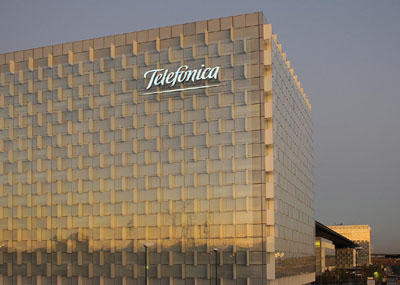Service providers in new markets like 5G and IoT (Internet of Things) need system integrators to make sure their services efficiently get off the ground. Business technology journalist, Antony Savvas asks whether telcos are doing enough to play a central role?
There have been bloated partner ecosystems around IoT, and the same thing could be happening in 5G. Telcos are being left to consider whether they just want to provide a network for services, or to also be the key player in making sure those services are efficiently developed, optimised and fully monetised for end customers.
Pocketing the cash
As system integrator subsidiaries of telcos, the likes of T-Systems, Telefonica Tech and BT Global should undoubtedly be playing key roles in making sure that those entering the 5G and IoT services market are putting more money into the pockets of telcos. But are they?
The likes of Microsoft, Amazon Web Services, Google, Dell Technologies, HPE and Oracle are already playing big roles in data integration services, between enterprises and the cloud and the emerging edge. This is taking plenty of cash away from the telcos.

Other niche players like managed service provider Cradlepoint, which has a key alliance with Ericsson, for instance, also continue to sign deals that make big money in the system integration field. Only a few days ago, it signed a deal with Juniper Networks to bring “5G diversity” to Juniper’s campus and branch networking portfolio.
Insight and troubleshooting
By combining Juniper’s wired access, wireless access and SD-WAN solutions with Cradlepoint’s 5G services offering, the two firms said their shared customers and partners would have more options to “reliably connect to remote locations”, with “added insight for better management and ongoing troubleshooting”.
This will be particularly beneficial within certain markets, like the retail space, they said, where LTE and 5G wireless becomes the preferred form of connectivity. For example, with 5G, retailers can offer curbside pick-up or set up temporary pop-up networks to get instant and dependable connectivity, where wired WAN connectivity is not an option.

Marc Bresniker, senior vice president of product management at Cradlepoint, says, “Quick-to-deploy, fast and reliable 5G connectivity drives current and new customer experiences, enables critical applications and services and opens the doors to new possibilities from self-checkout to just-in-time coupons and asset tracking.”
This sort of thing should of course be the domain of telcos, seeing that the data goes over the networks they have spent billions on building.
Scale up and commercialise
With such new business potentially bypassing them, maybe some telcos have finally jumped into action. BT recently created its ‘Division X’ unit, which forms part of its Enterprise business. The unit has been established to “scale up and commercialise” the development of customer solutions around 5G private networks, IoT and edge computing, says BT.

Interestingly, the company has appointed Marc Overton as managing director of Division X. He joins from Sierra Wireless, the provider of IoT and enterprise networking solutions, where he was the chief solutions officer and senior vice president for the EMEA and APAC regions. Prior to that job, he was managing director for global innovation and sales at IoT platform Cisco Jasper. Both his previous two firms have taken money away from telcos when it comes to system integration work in IoT.
Overton said: “Division X is set to be a key growth engine for BT’s Enterprise business, moving it from a telco to a tech co, by expanding into adjacent services which go beyond traditional calls and lines. We’ll be focused on turning emerging tech like 5G, IoT, edge and AI (artificial intelligence) into solutions that we can scale, sell and which will drive sustainable growth.”
Smart data
Another telco unit looking to catch up in generating new system integration revenues is NTT Communications (NTT Com). It has just announced the launch of Smart Data Platform (SDPF) Edge, an edge computing service with integrated operations available for a flat monthly fee.
Edge computing sees data-processing servers placed close to devices and equipment on factory floors, offices and other buildings, bypassing slower and potentially more expensive public cloud services. The on-demand, as-a-service SDPF Edge offering means customers do not have to purchase extra servers and other infrastructure to improve their data operations.
SDPF Edge, which is targeted mainly at the manufacturing industry, enables producers to maintain quality control by processing huge amounts of production data, to then “make decisions faster and for less cost than ever before”, said NTT.

“Sending massive amounts of data from devices to the cloud can greatly increase communication volume and cost,” NTT said. “SDPF Edge, however, lowers this cost by formatting and converting data for aggregation on the edge.”
The technology can be used to immediately identify variations in product quality, allowing rapid decision-making to mitigate problems. It can also be used to deliver purchase behaviour analysis and self-checkout scan-error detection in retail stores, for instance.
Telcos are in a good position to take advantage in serving organisations’ core needs in data collection, data management and data monetisation, and they should continue to step up to the plate in offering end-to-end solutions.
Open RAN
In another developing opportunity, analyst house Dell’Oro Group is charting good progress in the Open RAN market. It said Open RAN revenues are expected to account for around 15% of the overall 2G-5G RAN market by 2026, “reflecting healthy traction in multiple regions with both basic and advanced radios”.
“Open RAN is here to stay and the architecture will play an important role before 6G,” it added.

The Asia Pacific region is currently “dominating” the Open RAN market, said Dell’Oro Group, and is expected to play a leading role throughout the forecast period, accounting for more than 40% of total 2021-2026 sales.
Stefan Pongratz, vice president and analyst at the Dell’Oro Group, said: “The Open RAN movement has come a long way in just a few years, surprising both proponents and sceptics.”
The market is also an obvious opportunity for system integrators, so again, telcos should step up to make sure they dominate proceedings.
The author is Antony Savvas, a global freelance business technology journalist.
Comment on this article below or via Twitter: @VanillaPlus OR @jcvplus






